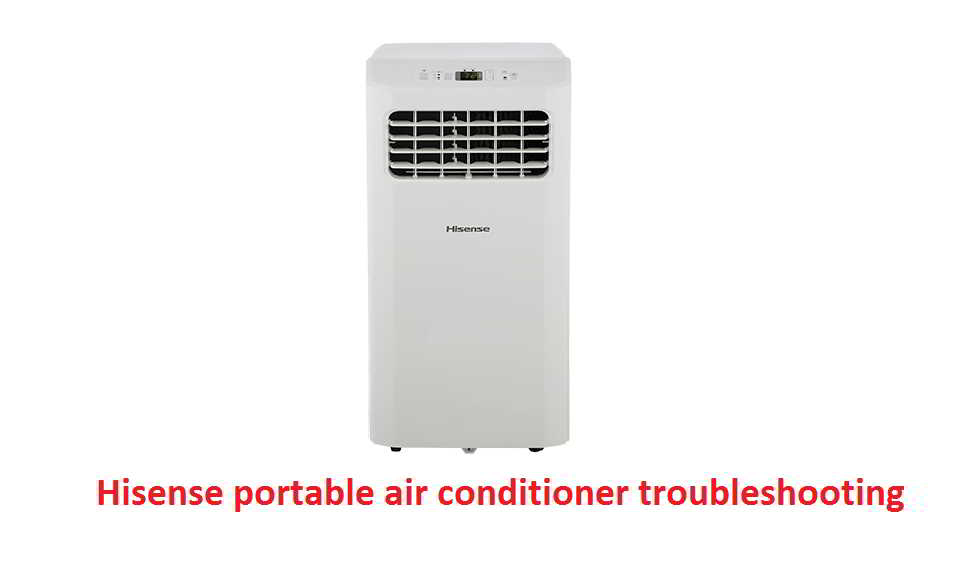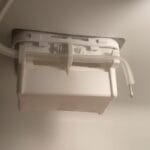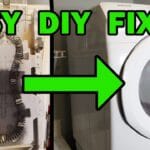Hisense air conditioners are popular for their efficiency and reliability. Yet, like all appliances, they can encounter problems.
Experiencing issues with your Hisense air conditioner can be frustrating, especially during hot weather. Whether it’s not cooling properly or making strange noises, these problems can disrupt your comfort. This guide will help you identify and fix common issues with your Hisense AC.
Understanding the basics of troubleshooting can save you time and money. By learning a few simple techniques, you can get your air conditioner back to working order. Let’s dive into the common problems and their solutions. Keep reading to restore your AC’s performance and enjoy a cool, comfortable environment once again.
Common Issues
Experiencing problems with your Hisense air conditioner? You are not alone. Many users face common issues that can usually be fixed with some troubleshooting. Let’s explore two common problems: not cooling and strange noises.
Not Cooling
One of the most frustrating issues is when your Hisense air conditioner is not cooling properly. This can make your home uncomfortable, especially during hot weather. Here are some potential reasons and solutions:
- Dirty Filter: Check and clean the filter. A clogged filter restricts airflow.
- Thermostat Settings: Ensure the thermostat is set to the correct mode and temperature.
- Blocked Vents: Make sure no furniture or objects are blocking the vents.
- Refrigerant Levels: Low refrigerant levels can hinder cooling. You may need a professional to check this.
Strange Noises
Strange noises coming from your air conditioner can be alarming. These sounds often indicate that something is wrong. Here are some common noises and their possible causes:
| Noise | Possible Cause |
|---|---|
| Banging | Loose or broken parts inside the unit. |
| Buzzing | Electrical issues or loose parts. |
| Clicking | Problem with the electrical components. |
| Hissing | Possible refrigerant leak. |
If you hear any of these noises, it is best to turn off the unit and call a professional. Ignoring these sounds can lead to further damage.

Credit: designlight.eu
Basic Troubleshooting
Basic troubleshooting of your Hisense air conditioner can help solve common issues. This can save you time and avoid unnecessary service calls. Follow these simple steps to check your unit.
Check Power Supply
First, check if the air conditioner is properly plugged in. Ensure the outlet is working by testing it with another device. Look at the circuit breaker for any tripped switches. Reset it if needed.
Clean Filters
Dirty filters can block airflow and reduce cooling efficiency. Remove the filters from the unit. Rinse them under running water. Let them dry completely before reinstalling. Clean filters every few weeks for optimal performance.
Remote Control Problems
Having trouble with your Hisense air conditioner’s remote control? You’re not alone. Remote control problems are common. They can frustrate even the most patient users. But don’t worry. Most issues are easy to fix with some basic troubleshooting.
Unresponsive Remote
If your remote is unresponsive, check the batteries first. Dead or weak batteries are the most common problem. Replace them with fresh ones. Make sure they are inserted correctly. If the remote still doesn’t work, try these steps.
Clean the battery contacts. Sometimes, dirt or corrosion builds up. Use a cotton swab and rubbing alcohol. Gently clean the contacts and let them dry. Now test the remote again.
Next, ensure there are no obstacles. The remote needs a clear path to the air conditioner. Remove any objects that might block the signal. Point the remote directly at the unit and try again.
Resetting Remote
Sometimes, the remote needs a reset. This can fix many issues. To reset, remove the batteries. Wait for about 10 minutes. Then, press all the buttons on the remote. This drains any remaining power.
Reinsert the batteries. Make sure they are fresh and correctly placed. Now, test the remote. It should respond to your commands.
If the remote still does not work, try a factory reset. Check your user manual. It will have specific instructions. Follow them carefully. This should restore the remote to its original settings.
Water Leakage
Water leakage from your Hisense air conditioner can be frustrating. It can lead to water damage and reduced efficiency. This issue can stem from a variety of sources, but two of the most common culprits are drainage issues and condensation problems.
Drainage Issues
Drainage issues often cause water leakage. First, check the drain pipe. It might be clogged. If it is, water will not flow out properly.
- Remove the blockage using a thin wire.
- Ensure the drain pipe is properly connected.
- Check for any kinks or bends in the pipe.
Sometimes, the drain pan may be full. This can happen if the air conditioner runs for long periods. Empty the drain pan regularly to avoid overflow. Consider using a pump for continuous drainage.
Condensation Problems
Condensation problems can also lead to water leakage. If the air filter is dirty, it can cause excess condensation.
- Clean the air filter every two weeks.
- Replace the filter if it is damaged.
Check the insulation on the refrigerant lines. Poor insulation can cause condensation to form. Wrap the lines with new insulation if needed.
| Issue | Solution |
|---|---|
| Clogged Drain Pipe | Clear blockage with a thin wire |
| Full Drain Pan | Empty regularly or use a pump |
| Dirty Air Filter | Clean or replace filter |
| Poor Insulation | Wrap refrigerant lines with new insulation |
Addressing these issues promptly can prevent water leakage. This ensures your Hisense air conditioner operates efficiently and effectively.
Error Codes
Hisense air conditioners are reliable, but sometimes issues arise. The unit displays error codes to help troubleshoot. Understanding these codes can save time and money. Below, we will explore common error codes such as E1 and E2.
E1 Error Code
The E1 error code usually indicates a problem with the temperature sensor. This sensor monitors the room temperature and ensures optimal cooling.
Here are some steps to troubleshoot the E1 error code:
- Turn off the air conditioner.
- Check the temperature sensor for any visible damage.
- Ensure the sensor is properly connected.
- If the issue persists, consider replacing the sensor.
Refer to the user manual for detailed instructions on locating the sensor.
E2 Error Code
The E2 error code often points to a problem with the air filter. A dirty or clogged filter can reduce efficiency and cause this error.
Follow these steps to resolve the E2 error code:
- Turn off the air conditioner.
- Remove the air filter.
- Clean the filter with warm water and mild soap.
- Allow the filter to dry completely.
- Reinstall the filter and turn the unit back on.
Regular cleaning of the air filter can prevent the E2 error code from appearing.
By understanding these common error codes, you can keep your Hisense air conditioner running smoothly.
Credit: www.tiktok.com
Sensor Malfunctions
Sensor malfunctions in Hisense air conditioners can cause a variety of issues. These problems might affect the overall performance of the unit. Understanding sensor malfunctions can help in quick troubleshooting.
Temperature Sensor
The temperature sensor in your Hisense air conditioner monitors the room temperature. It ensures the unit maintains the desired temperature.
If the temperature sensor fails, the air conditioner might not cool properly. Common symptoms include:
- Unit runs continuously without reaching the desired temperature.
- Air conditioner shuts off too early or too late.
To troubleshoot:
- Check the sensor’s placement. Ensure it is not exposed to direct sunlight or heat sources.
- Inspect the sensor for any visible damage or loose connections.
- Use a multimeter to test the sensor’s resistance. Refer to the unit’s manual for the correct readings.
Humidity Sensor
The humidity sensor controls the moisture levels in the air. This is important for maintaining comfort and air quality.
A malfunctioning humidity sensor might cause:
- Excessive humidity in the room, leading to a clammy feeling.
- Dry air, causing discomfort and potential health issues.
To troubleshoot:
- Ensure the sensor is clean and free of dust and debris.
- Check the sensor’s wiring connections for any signs of wear or damage.
- Test the sensor with a multimeter. Compare the readings with the manufacturer’s specifications.
Regular maintenance of your Hisense air conditioner’s sensors can prevent many issues. Proper functioning sensors ensure optimal performance and comfort.
Fan Issues
Fan issues in Hisense air conditioners can cause significant discomfort. Understanding and troubleshooting these issues is crucial. Let’s explore common problems like fan not working and loud fan noise.
Fan Not Working
If the fan is not working, start by checking the power supply. Ensure the air conditioner is plugged in. Verify that the circuit breaker has not tripped. If everything looks fine, check the remote control settings. Make sure the fan mode is selected. Dirty filters can also cause the fan to stop working. Clean the filters regularly. If the problem persists, the fan motor might be faulty. In this case, professional help may be required.
Loud Fan Noise
A loud fan noise can be annoying. This might indicate a problem. Loose screws or debris can cause noise. Inspect the unit for any loose parts. Tighten screws if necessary. Check for any obstructions in the fan blades. Clean any debris found. Sometimes, the noise could be due to a worn-out fan motor. If cleaning and tightening do not help, contact a technician. They can diagnose and fix the issue.
Professional Help
Even the best Hisense air conditioners can face issues. Sometimes, DIY fixes don’t work. This is when professional help becomes necessary. A trained technician can solve complex problems and ensure your unit runs efficiently. Let’s explore when to call a technician and how to choose the right service provider.
When To Call A Technician
If your air conditioner makes strange noises, it’s time to call a technician. Unusual sounds often signal internal problems. Also, if your unit stops cooling, a professional should inspect it. Low cooling might indicate a refrigerant leak or a faulty compressor. These issues require expert skills to fix.
Frequent cycling on and off is another sign. This could mean a malfunctioning thermostat or electrical problem. Technicians have the tools to diagnose and repair such issues. Finally, if you notice water leaks, seek help immediately. Water leaks can damage your home and the unit itself.
Choosing A Service Provider
Selecting the right service provider is crucial. Start by checking online reviews. Positive feedback often indicates reliable service. Next, verify their certifications and licenses. Certified technicians follow industry standards and ensure quality work.
Ask for estimates from multiple providers. Compare their prices and services. Avoid choosing the cheapest option blindly. Sometimes, low prices mean poor service. Finally, check their availability. A good service provider should offer prompt service. This ensures your air conditioner gets fixed quickly.

Credit: advanceddiabesity.com
Frequently Asked Questions
Why Is My Hisense Ac Not Cooling?
Check the thermostat setting. Ensure the air filter is clean. Verify the power supply.
How Do I Reset My Hisense Air Conditioner?
Unplug the unit. Wait for 5 minutes. Plug it back in. Turn it on.
What Does The E5 Error Code Mean?
E5 indicates a communication error. It might require technician assistance. Check the manual.
Why Is My Hisense Ac Making Noise?
Check for loose parts. Ensure the unit is level. Clean the air filter.
How Often Should I Clean The Air Filter?
Clean the air filter every two weeks. It keeps the unit efficient and maintains air quality.
Conclusion
Solving Hisense air conditioner issues can be straightforward with proper guidance. Regular maintenance helps prevent common problems. Always check the basics like power supply and filters. If issues persist, consult the manual or seek professional help. These steps can ensure your air conditioner runs smoothly.
Stay cool and comfortable with a well-functioning unit. For more detailed solutions, consider expert advice. Troubleshooting can save you time and money. Keep your Hisense air conditioner in top shape for optimal performance.




